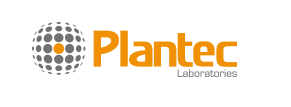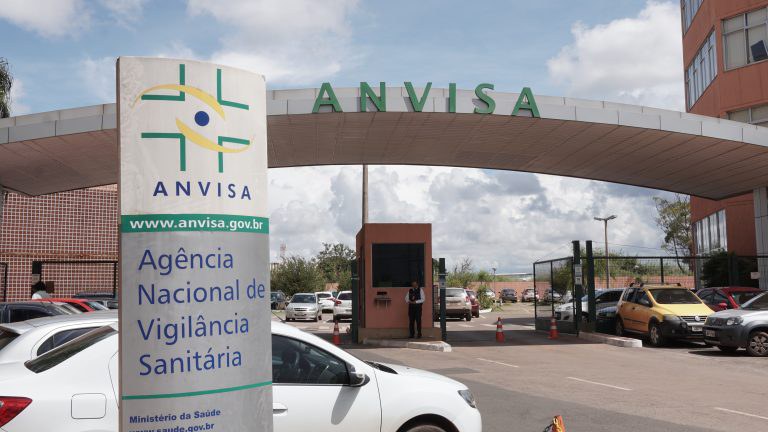New Anvisa (Brazil) Resolution Updates Risk Assessment for Pesticides and Ag Bioinputs
In compliance with court decisions, Anvisa approves the toxicological evaluation of lambda-cyhalothrin + lufenuron (Pilarquim); imidacloprid and diclosulan (Tecnomyl); metominostrobin + tebuconazole + chlorothalonil (Ihara); tebuconazole (GSP); azoxystrobin + cyproconazole (Lemma); and malathion (Biorisk). (Official Gazette, Res. No. 4684 – 4688 and 4692 – 4693 from 11/19/2025, Anvisa)
Bayer plans to launch the herbicide Icafolin-methyl in Brazil in 2028, the first market to receive this technology. This is the first AI with a new mode of action for post-emergence weed control in over 30 years. (Bayer)
Mosaic announced Felipe Pecci as the new commercial vice president in Brazil. (The Mosaic Company)
Federal Prosecutor’s Office in the State of Mato Grosso do Sul filed a US$ 55.7 million public civil action against more than 20 companies and Ibama, following confirmation of chronic atrazine contamination in the Rio Dourados Basin. The Prosecutor’s Office alleges regulatory omission by Ibama and requests a court order compelling the agency to immediately begin the re-evaluation of atrazine’s registration and implement a permanent residue-monitoring program, in addition to suspending sales and submitting a full environmental diagnosis. (MPF/MS)
Yara Brazil presented, during COP30, new initiatives to cut emissions in fertilizer production and use. The company highlighted fertilizers produced with renewable energy, which reduced the carbon footprint of coffee by 40% in partnership with Cooxupé, and by 40% to 66% in potato production with PepsiCo. Brazil also became the first country in the Americas to produce renewable ammonia using sugarcane-based biomethane, a technology that can reduce emissions by up to 90%. According to Yara, decarbonizing the sector requires an integrated approach across the entire value chain, from raw materials to the final consumer. (Yara Fertilizantes)
Approximately 10 tonnes of agricultural pesticides were seized by the State Border Operations Department (DOF) during an inspection on highway MS-386, in Mundo Novo, State of Mato Grosso do Sul. The operation is part of the “Protector of Borders and Divisions” program and also seized 27,500 packs of cigarettes. All seized goods were sent to the Federal Revenue Service. (DOF/MS)
The Supreme Court of Brazil resumed trial on the constitutionality of tax incentives for agrochemicals. Rapporteur Edson Fachin voted to strike down the incentives; André Mendonça and Flávio Dino supported maintaining them with toxicity-based criteria; while Cristiano Zanin, supported by Dias Toffoli and Luiz Fux, voted to fully uphold the benefits. The trial has been suspended once again with no set date for completion. (Supreme Federal Court)
Ministry of Agriculture held, at AgriZone [the innovation and ag-tech space within COP30], the panel “Center of Excellence in Fertilizers and Plant Nutrition – Cefenp”, presenting the new governance model designed to accelerate innovation in efficient fertilizers in Brazil. Cefenp is a network of hubs in nine states, with international partners, created to transform public R&D assets into technologies adapted to tropical biomes, strengthening food security, decarbonization and production autonomy. According to the Ministry, the center will operate in alignment with the National Fertilizer Plan and is expected to boost smart fertilizers, bioinputs and regenerative practices. (MAPA)
Anvisa rejects toxicological evaluation of pesticides Bacillus thuringiensis (Ergon) and Metarhizium anisopliae (Nave Bio). (DOU, Res. No. 4658 from 11/19/2025, Anvisa)
Embrapa validated, over three crop seasons in Unaí, State of Minas Gerais, the nutrient-replenishment fertilization strategy as an efficient approach for Cerrado Biome soils with high and stabilized fertility resulting from long-term management. The study showed that replacing only the nutrients used during the last harvest maintains productivity, reduces costs and improves fertilizer efficiency, while also lowering the carbon footprint and increasing energy efficiency. According to researchers, nutrient-balance calculations combined with soil analysis prevent deficits and excesses of N, P and K, supporting consistent performance in systems with soybean, corn, sorghum and Brachiaria spp. (Embrapa)
Brazil’s Ministry of Agriculture has appointed Marina Veras Dourado Pires as head of the Re-evaluation Division within the General Coordination for Pesticides and Related Products, under the Plant Health and Agricultural Inputs Department of the Secretariat of Agricultural Defense. (Official Gazette of Brazil, Personnel Ordinance SE/MAPA No. 1729 from 11/24/2025)
Combined use of nutrients and inoculants in the planting furrow requires attention in regard to product compatibility. Boron sources may physically or chemically interact with Bradyrhizobium japonicum inoculants, the bacterium responsible for biological nitrogen fixation (BNF). Technical studies show that incompatibilities can impair nodule formation and reduce nitrogen-fixation efficiency in crops such as soybean. Researchers recommend checking compatibility studies and manufacturer guidelines before joint application to avoid loss of agronomic performance. (Federal University of Tocantins)
Cancellation of three pesticide registrations, two of them at the request of the registrants, and additionally, an ongoing registration application was also cancelled at their request. (Official Gazette of Brazil, Act No. 55 from 11/18/2025, Ministry of Agriculture)
Researchers from the Agronomic Institute – IAC and the Biological Institute of São Paulo have completed new protocols for managing ripe-grape rot in vineyards in Jundiaí, State of São Paulo. The studies identified local fungal variants of the genera Glomerella and Colletot
An analysis by Marcos Gomes, co-founder of Pesquisagro and Agroadvance Brasil and CEO of Inralt, on the fertilizer sector indicates strong heterogeneity in the role of quality departments in Brazilian fertilizer plants, recurring issues with outsourced laboratories (delays and inconsistent results) and a rise in adulterated input cargoes, leading to multimillion-real losses and exposing manufacturers to high risks due to weak inbound control procedures. (Agroadvance Brasil; Inralt)
Researchers from the University of Brasília and Embrapa’s Genetic Resources and Biotechnology Unit have identified 12 volatile compounds released by maize that attract the fall armyworm (Spodoptera frugiperda), one of the crop’s most damaging pests. The study also confirmed the role of Crotalaria spectabilis as a natural barrier, due to its distinct volatile profile that does not attract the insect. The findings validate the use of crotalaria around maize fields as a low-cost strategy to reduce infestations and support integrated pest management programs. (UnB; Embrapa)
Anvisa set guidelines for risk assessment for operators, workers, residents and bystanders exposed to pesticides, products for environmental control, related substances and ag bioinputs. The regulation makes the Occupational, Resident and Bystander Risk Assessment Dossier mandatory for products with active ingredients have AOEL [Acceptable Operator Exposure Level] and, when applicable, AAOEL [Acute Acceptable Operator Exposure Level] values established in Anvisa monographs, and sets deadlines for reassessing existing registered use scenarios. (Official Gazette of Brazil, Resolution No. 998 from 11/21/2025, Anvisa)
According to a text published by Lilian Gonçalves, Registration Coordinator at Bequisa, the 4.0 version of MAPA’s SEI Petitioning Guide, introduces practical changes for pesticide registration, including electronic notifications with a deemed 15-day deadline, mandatory OCR for scanned PDFs, new file size limits, valid process filing time and fully digital management of powers of attorney and legal representatives integrated with the Federal Revenue Service, requiring regulatory teams to adapt quickly. (MAPA; Bequisa)
According to Jeferson Souza, market analyst at Agrinvest Commodities, Brazilian input purchases have slowed down at the end of the year amid high interest rates, less capitalized farmers and tighter credit, a situation compounded by irregular planting of the 2025/26 soybean. For crop protection products, the market remains open for both the 2025/26 soybean season and the second-crop corn, while fertilizer demand for soybeans is largely closed and negotiations are now focused on the off-season and the 2026/27 season, with “plenty of business still on the table” through the end of 2025. (Agrinvest Commodities)

Latin America
According to an assessment by Gustavo Ferraris, crop nutrition specialist at INTA Pergamino, regional unit of Argentina’s National Institute of Agricultural Technology, the restoration of soil moisture allowed wheat farmers to target high yields once again, with a technical benchmark of around 30 kg of nitrogen / tonne of grain (soil + fertilizer) to achieve high yields and about 10.5% protein. Ferraris stresses the need for flexible in-season N management, the role of wheat as the “backbone” of the cropping system (supporting double-cropped soybeans and reducing herbicide use) and the importance of replenishing phosphorus and sulfur when yields exceed initial plans, so as not to harm following crops. (INTA)
According to Campo Limpio, the organization in charge of empty agrochemical packging management in Argentina, the Transitory Storage Center in Valle de Uco, Mendoza, recently sent around 8 tonnes of plastic for recycling, bringing the total to more than 50 tonnes of decontaminated containers in 2025 processed using triple-rinsing, in compliance with National Law No. 27.279 on the management of empty pesticide containers. (Campo Limpio)
In South America, Nufarm increased revenue and margins in its seeds division, supported by stronger hybrid performance and expanded carinata acreage for bioenergy. The regional results helped offset global pressure on the seeds technology segment, affected by the drop in fish oil prices. (Nufarm)
Mexico’s National Service for Agri-Food Health, Safety and Quality has introduced operational changes in administrative procedures for agricultural pesticides, including shorter response times for technical assessments (from 22 to 18 business days), consolidation of certain procedures, new forms and documentation requirements and the acceptance of efficacy studies carried out in other countries, requiring companies to adjust how they prepare and manage their regulatory dossiers. (Senasica)
Research group from the National University of La Plata, in Argentina, developed a pesticide residue detection device. The innovation addresses a need in the country’s citrus sector, which moves over US$ 1 billion, but faces losses of more than 60% of analyzed fruits due to the excessive use of agrochemicals. Chemists Jimena Tuninetti and Matías Rafti seek to replace high-cost techniques with on-site measurements. According to the researchers, the device will allow farmers to meet international regulatory requirements. (National University of La Plata)

READ MORE:

